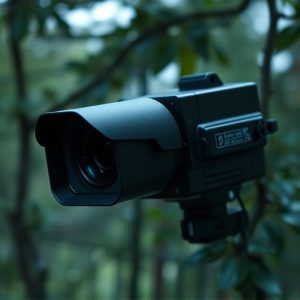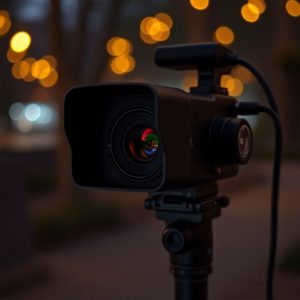Detect Hidden Cameras: Smartphone Methods for Invisible IR Camera Home Monitoring
Hidden cameras, especially invisible IR cameras, pose privacy threats but can be detected using spec…….
Hidden cameras, especially invisible IR cameras, pose privacy threats but can be detected using specialized smartphone apps that analyze light patterns and heat signatures. Modern smartphones with infrared technology offer enhanced home monitoring capabilities by identifying heat sources in low-light conditions. Regular visual inspections, app-based camera detection, and additional security measures like thermal imaging are crucial for safeguarding personal spaces from invisible IR cameras in the digital age.
Uncover the hidden eyes in your surroundings with our guide to detecting secret cameras using just your smartphone. In today’s digital age, privacy concerns are paramount, especially with the prevalence of invisible IR cameras for home monitoring. Learn how to leverage your phone’s built-in features and innovative technologies like infrared (IR) sensors to identify these covert devices. Discover practical tips for safe, effective monitoring without compromising your peace of mind.
- Understanding Hidden Cameras and Their Detection
- Smartphone Features for Camera Identification
- Using Infrared (IR) Technology on Your Phone
- Practical Tips for Safe and Effective Monitoring
Understanding Hidden Cameras and Their Detection
Hidden cameras, often called spy cameras or surveillance cameras, are designed to capture footage unobtrusively, making them difficult to detect with the naked eye. These devices can be as small as a button or a pen and can record video and take photos covertly. They’re commonly used for home monitoring, pet watching, or even in businesses for security purposes, but their invisible nature poses a concern for privacy.
One type of hidden camera is the Invisible IR Camera, which uses infrared technology to capture images in low-light conditions without being noticed. These cameras can be hidden in everyday objects like pictures frames, clocks, or smoke detectors. Detecting such devices requires specific smartphone apps that use advanced sensors and algorithms to analyze light patterns, heat signatures, and other visual cues that might indicate the presence of a hidden camera. By employing these methods, users can help ensure their privacy and security in both personal and professional settings.
Smartphone Features for Camera Identification
Modern smartphones are equipped with a variety of features that can aid in detecting hidden cameras, particularly those used for home monitoring or surveillance purposes. One such capability is the ability to analyze light wavelengths using their built-in sensors. Many smartphone cameras can detect invisible IR (Infrared) light, which is often employed by covert cameras to remain undetected. By enabling night mode and utilizing specific apps that interpret light data, users can identify unusual light patterns indicative of hidden camera presence.
Additionally, smartphones with advanced image processing capabilities can analyze visual cues like irregular reflections, distortions, or shadows that may be visible in a scene but subtle enough for the human eye to overlook. These features, combined with dedicated apps designed for security and privacy checks, empower individuals to enhance their awareness and safeguard their personal spaces from such clandestine surveillance methods.
Using Infrared (IR) Technology on Your Phone
Many smartphones now come equipped with infrared (IR) capabilities, a feature that can be surprisingly useful for detecting hidden cameras. IR technology is often used in home monitoring systems, as it allows users to see through darkness and detect heat signatures. By enabling your phone’s IR sensor, you can scan your surroundings for any unusual heat sources that might indicate the presence of an invisible IR camera.
This method works best in low-light conditions, as IR radiation is less affected by darkness than visible light. You can use specialized apps designed to enhance and visualize IR images, making it easier to spot hidden cameras. These apps often provide a clearer view of what’s around you, helping you identify potential security risks in your home or workplace.
Practical Tips for Safe and Effective Monitoring
When monitoring your home for potential hidden cameras, especially those using invisible IR technology, it’s crucial to stay vigilant and employ practical strategies. Start by conducting regular visual inspections, paying close attention to areas often overlooked, such as corners and behind furniture. Utilizing smartphone apps designed for camera detection can significantly aid in this process; these tools analyze light patterns and anomalies that might indicate the presence of an invisible IR camera.
For enhanced safety, consider using multiple detection methods simultaneously. This could include physical checks (like feeling for unusual devices), thermal imaging (to identify heat signatures indicative of cameras), and smartphone-based apps. Remember, staying proactive and informed about potential threats is key to effective home monitoring in today’s digital age.
In today’s digital age, the potential presence of hidden cameras poses a significant concern. However, with the right smartphone tools, you can take control of your privacy. By leveraging your device’s sensors and advanced features, such as infrared (IR) technology, you can detect invisible IR cameras for effective home monitoring. Following practical tips ensures safe and efficient monitoring, empowering you to protect your personal space and peace of mind in an increasingly connected world.


